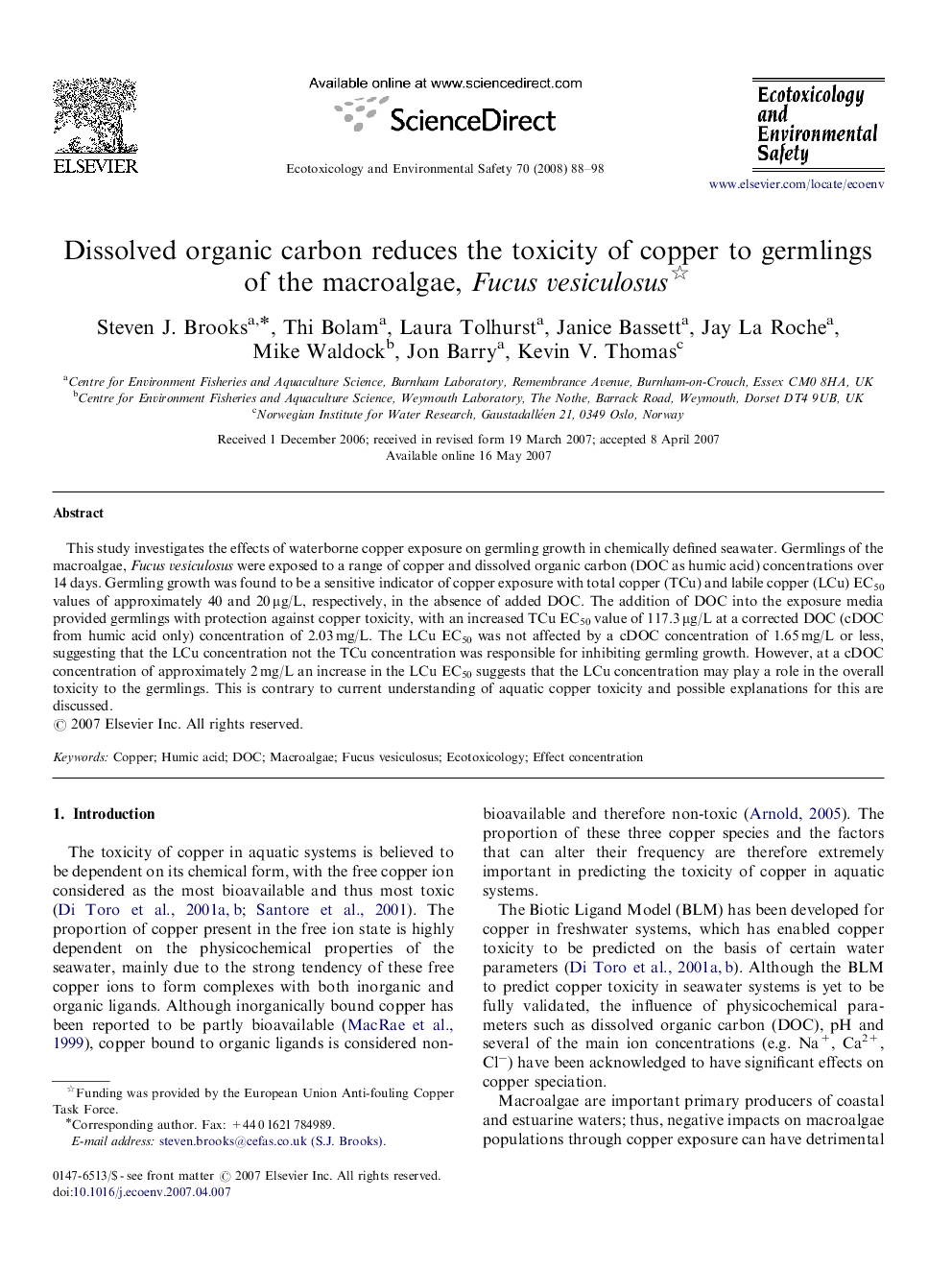| Article ID | Journal | Published Year | Pages | File Type |
|---|---|---|---|---|
| 4422155 | Ecotoxicology and Environmental Safety | 2008 | 11 Pages |
This study investigates the effects of waterborne copper exposure on germling growth in chemically defined seawater. Germlings of the macroalgae, Fucus vesiculosus were exposed to a range of copper and dissolved organic carbon (DOC as humic acid) concentrations over 14 days. Germling growth was found to be a sensitive indicator of copper exposure with total copper (TCu) and labile copper (LCu) EC50 values of approximately 40 and 20 μg/L, respectively, in the absence of added DOC. The addition of DOC into the exposure media provided germlings with protection against copper toxicity, with an increased TCu EC50 value of 117.3 μg/L at a corrected DOC (cDOC from humic acid only) concentration of 2.03 mg/L. The LCu EC50 was not affected by a cDOC concentration of 1.65 mg/L or less, suggesting that the LCu concentration not the TCu concentration was responsible for inhibiting germling growth. However, at a cDOC concentration of approximately 2 mg/L an increase in the LCu EC50 suggests that the LCu concentration may play a role in the overall toxicity to the germlings. This is contrary to current understanding of aquatic copper toxicity and possible explanations for this are discussed.
